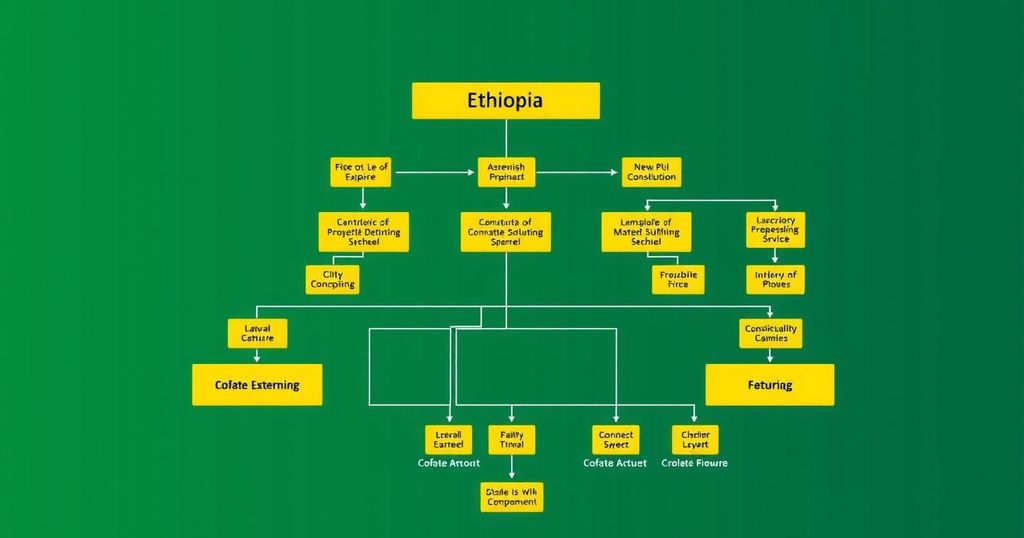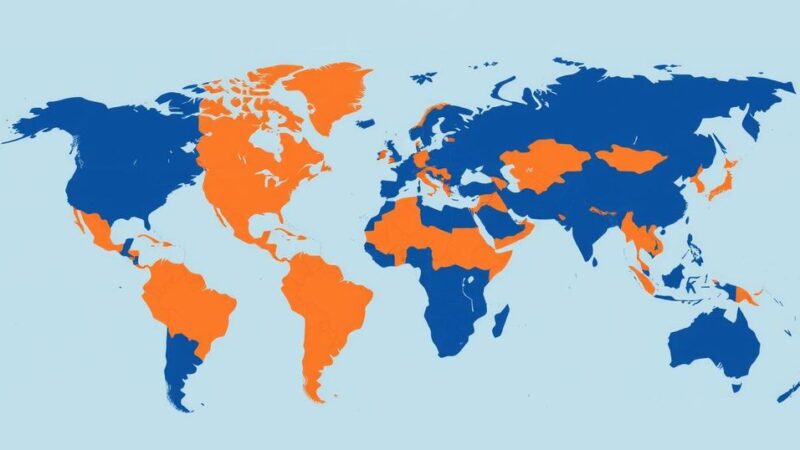The governance of Ethiopia has transitioned from a feudal monarchy under Haile Selassie I to a federal republic following the 1994 constitution. This framework promotes ethnic representation and self-determination rights. Despite advancements in political inclusivity, challenges remain regarding true representation of diverse groups. The military plays a significant role in maintaining security and participating in international peacekeeping efforts.
Ethiopia’s governance structure has evolved significantly from its traditional feudal system under Emperor Haile Selassie I, who reigned from 1930 to 1974, to its current federal system established after the Ethiopian People’s Revolutionary Democratic Front (EPRDF) assumed control in 1991. Following the abdication of Selassie, the Derg introduced a Soviet-style regime. The drafting of a constitution in 1994 culminated in the establishment of the Federal Democratic Republic of Ethiopia in 1995, which emphasizes the rights of various ethnic groups to self-determination. The 1994 constitution set forth the framework of a bicameral legislature, with a House of Peoples’ Representatives elected by direct vote and a House of the Federation representing Ethiopia’s ethnicities. Local governance is organized into regional states or kililoch, each led by an elected president, enabling ethnic representation in government. A significant aspect of the constitution is the provision for a judiciary independent from the executive, headlined by the Supreme Court. Political participation is stipulated as a right for all citizens aged 18 and above, with measures aimed at mitigating underrepresentation of minority groups, including women, in legislative bodies. Despite advancements, representation within the legislature can be dissonant with demographic realities. The Prosperity Party emerged in 2019 as the successor to the EPRDF, encompassing various ethnic parties within Ethiopia. Ethiopia’s military, the Ethiopian National Defense Forces (ENDF), stands as one of Africa’s largest, participating in international peacekeeping initiatives. The armed forces include a substantial army and a small air force, demonstrating Ethiopia’s commitment to regional stability and security.
Ethiopia’s political structure is deeply rooted in its history of feudalism and monarchic governance. Under Haile Selassie I, a semblance of modern governance was introduced with parliament and judiciary reforms. However, the strict control by the emperor limited the effectiveness of these institutions. The subsequent rise of the Derg and the subsequent military regime marked a significant shift, leading to the implementation of a Soviet-style governance model. Following the fall of the Derg, the introduction of the EPRDF and the 1994 constitution marked a pivotal transition towards federalism, focusing on ethnic identities and self-determination rights, significantly influencing Ethiopia’s political landscape today.
In conclusion, Ethiopia has experienced a dramatic transformation in its governance structure from a feudal monarchy to a federal republic emphasizing ethnic self-determination. The constitution established in 1994 has laid the groundwork for a more inclusive political system, albeit with challenges regarding actual representation. The emergence of new political parties, like the Prosperity Party, signifies ongoing political evolution. Furthermore, a robust military underscores the nation’s commitment to regional stability and peacekeeping efforts.
Original Source: www.britannica.com






